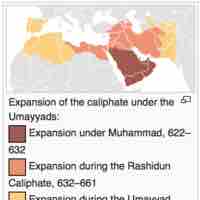Chapter 10
The Rise and Spread of Islam
By Boundless

The nomadic pastoralist Bedouin tribes inhabited the Arabian Peninsula before the rise of Islam around 700 CE.
Cities like Mecca and Medina acted as important centers of trade and religion in pre-Islamic Arabia.
The nomadic tribes of pre-Islamic Arabia primarily practiced polytheism, although some tribes converted to Judaism and Christianity.
Women had almost no legal status under tribal law in pre-Islamic Arabia.
Born c. 570 CE in Mecca, Muhammad was raised by his uncle Abu Talib and later worked as a merchant.
Muhammad received revelations from 609-632 CE, and they became the basis for the Quran, the central religious text of Islam.
As Islam faced more political and religious opposition in Mecca, Muhammad and his followers migrated to Medina in 622 CE.
After eight years of warring with Mecca and finally conquering the city in 630 CE, Muhammad united Arabia into a single Islamic state.
After Muhammad's death in 632 CE, there were conflicts among his followers as to who would become his successor, which created a split in Islam between the Sunni and Shi'a sects.

The Umayyad Caliphate, the second of the four major Arab caliphates established after the death of Muhammad, expanded the territory of the Islamic state to one of the largest empires in history.
In the years following the Prophet Muhammad's death, the expansion of Islam was carried out by his successor caliphates, who increased the territory of the Islamic state and sought converts from both polytheistic and monotheistic religions.
Abbasid leadership cultivated intellectual, cultural, and scientific developments in the Islamic Golden Age.
The Abbasid Caliphate was the third of the Islamic caliphates to succeed the Islamic prophet Muhammad in 750 CE, and ruled over a large, flourishing empire for three centuries.